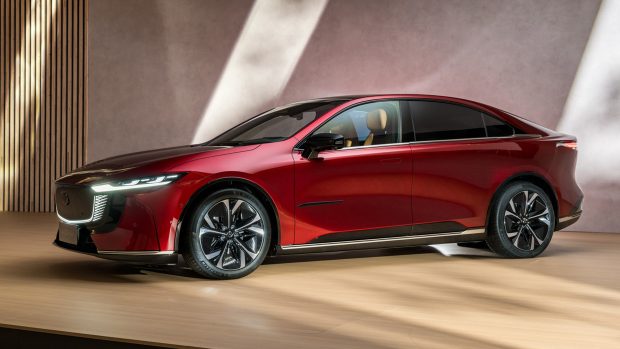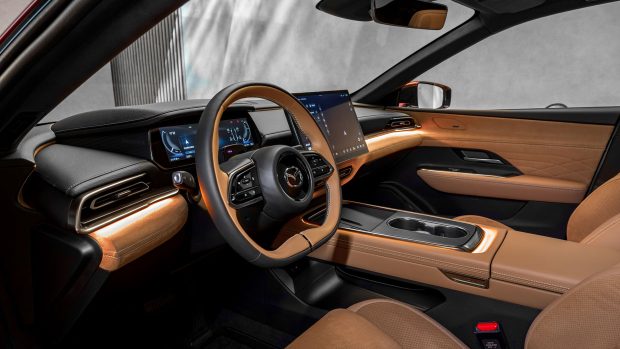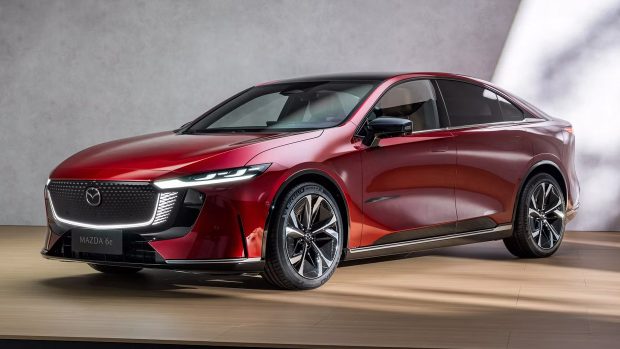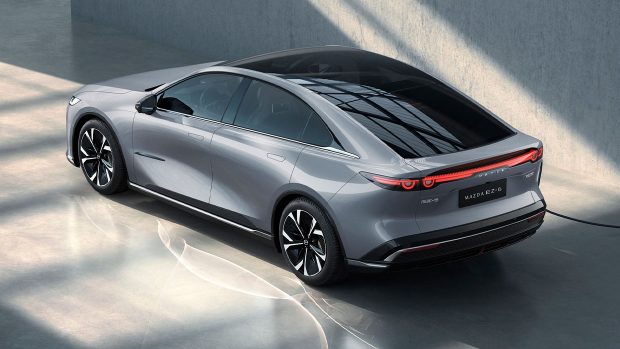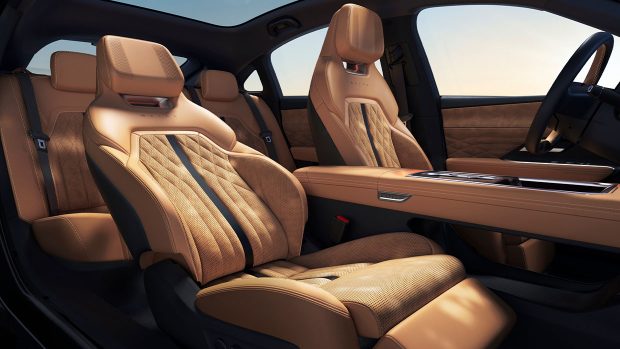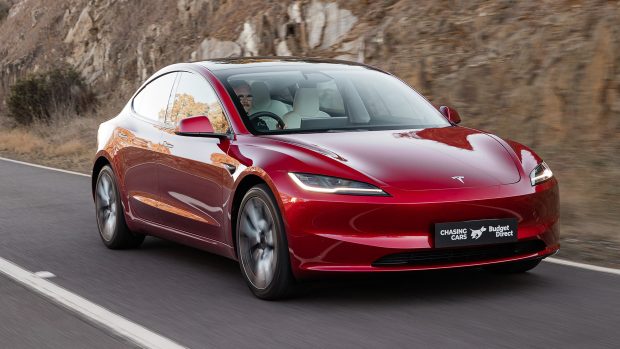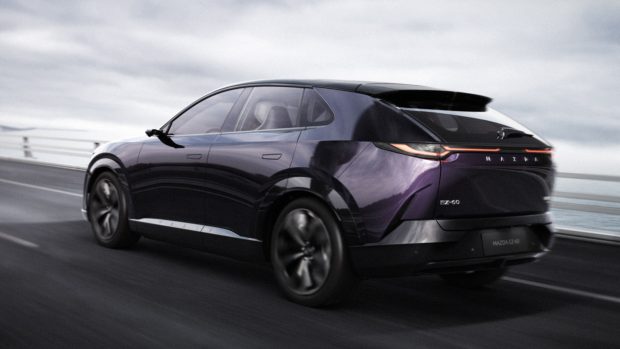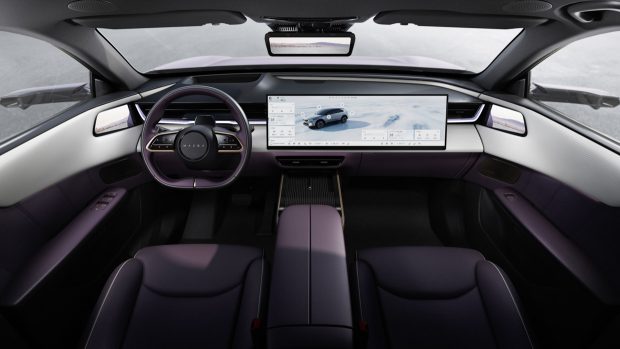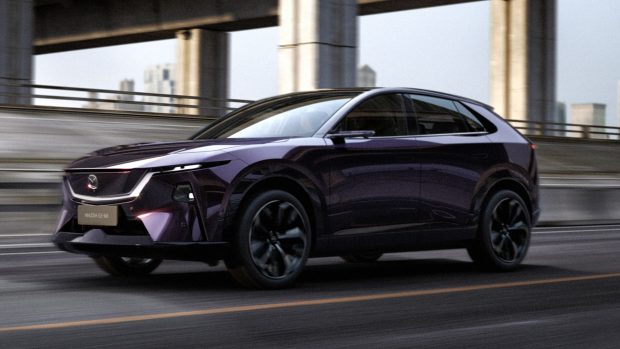-
Car Reviews
- All reviews
- Midsize SUVs
- Small cars
- Utes
- Small SUVs
- Large SUVs
- Large cars
- Sports SUVs
- Sports cars
- Vans
Latest reviews
- Car News
-
Car Comparisons
Latest comparisons
- Chasing Deals
Right-hand-drive approval unlocks Chinese-made electric Mazdas Australia, with business case almost ready for submission to Japan
Mazda Australia is finalising a business case to launch the 6e electric sedan locally, following a successful push from Mazda UK to secure right-hand-drive (RHD) production approval for the Chinese-built Tesla Model 3 rival.
Mazda UK is also understood to be lobbying for RHD production of the closely related CX-6e electric midsize SUV—a Tesla Model Y-sized crossover that features prominently on Mazda Australia’s local wish list.
Mazda Australia managing director Vinesh Bhindi acknowledged the brand had been slow to bring mainstream EVs to Australia, but said it recognises that “six or seven percent” of local buyers are now purchasing battery electric vehicles (BEVs), with the re-elected Albanese government signalling BEVs could make up a greater share of future sales.
“With the RHD Mazda 6e being confirmed, we need to get our skates on and build the appropriate business case,” Bhindi told media.
“[It isn’t] a done deal, but the way we look at it is that Mazda Australia offers the [greatest] amount of models – as many as we can – when you look at the global portfolio and we don’t want to abandon that strategy.
“Secondly, with the New Vehicle Efficiency Standard [laws now in effect], if the government is really determined to reduce our carbon footprint from Australia, I can only expect they will go stronger and harder towards BEVs…so Mazda will offer that, if we can.”
While the 6e sedan is the closer of the two cars to local confirmation, the CX-6e is following closely behind. Both EVs are expected to be priced to generate sufficient volume to positively influence Mazda’s Australian fleet average emissions under NVES.
“We all want [the CX-6e], so if it becomes available, we will be asking for it,” said Mazda Australia national manager of product and business strategy Daniel Wakelam. “The business case [for CX-6e] will be a bit easier. Because it’s a medium SUV, it is pretty straightforward.”
Co-developed with Chinese joint venture partner Changan, the 6e was revealed in April 2024 and confirmed for European sales—including RHD production for the UK—in early 2025. Measuring 4921mm long and 1890mm wide, the fastback-style sedan is around 50mm longer, 50mm wider and 40mm taller than the outgoing petrol-powered Mazda 6.
Based on Changan’s EVA1 platform, which also underpins Deepal vehicles, the Mazda 6e is rear-wheel drive, with outputs of 180kW and 320Nm. Two batteries are available globally: a 66.0kWh (usable) lithium iron phosphate (LFP) pack rated for 479km range, and a 75.0kWh (usable) nickel manganese cobalt (NMC) unit claiming 552km of WLTP range.
Both batteries support 11kW AC charging, but a notable quirk is that the smaller LFP pack allows significantly faster DC charging – promising 200kW peak and 126kW average from 10–80 percent in 23 minutes.
By comparison, the NMC battery is limited to a 95kW peak (averaging 70kW over the same window), resulting in a longer 47-minute charge time.
The 6e offers black or tan interiors, with features including a 14.6-inch touchscreen, 14-speaker Sony sound system, 50-inch augmented reality head-up display, and zero-gravity front seats.
Boot space measures 330 litres, supplemented by a 70-litre frunk. A liftback format has been revealed, with no wagon variant confirmed at this stage.
In addition to the two BEV variants, a petrol-electric range extender version of the 6e is also offered in China. It pairs a 70kW 1.5-litre four-cylinder engine acting as a generator with either an 18.9kWh or 28.4kWh battery, delivering 105km or 160km of EV range and more than 1000km of combined driving range.
Bhindi confirmed that only the BEV versions of the 6e are included in Mazda Australia’s current business case, though the local distributor may “potentially expand” the lineup to include the range extender model if interest arises.
Mazda Australia’s product boss Daniel Wakelam provided Chasing Cars with further detail on the business case process for the 6e.
“This is a really distorted segment because Tesla Model 3 [sales] are massively distorting it. That is probably a special case. We are not going to [sell] 25,000 6es, like they [sell Model 3s],” said Wakelam.
“To get the[6e] program across the line with Japan, we have to come up with a business case. That is what we put to them—we can sell this many cars, and make this much profit.”
Tesla delivered 17,094 Model 3 sedans in Australia in 2024, compared with 15,401 Toyota Camrys and just 1354 Mazda 6s, which is now discontinued. Other notable results in the segment included two BEVs: the BYD Seal (6393) and BMW i4 (2062).
“The UK are desperate for the [6e] so they did the heavy lifting,” Wakelam revealed. “They got the [RHD] business plan approved. Once RHD is available, it makes it easier [to bring it to Australia].
“EVs are also easier than ICE cars because there is no emissions test that has to be done. It brings the cost down, and means there is less unique investment for [ADR] compliance than what some other cars would have.”
Unveiled at the 2025 Shanghai motor show and badged EZ-60 in China, the CX-6e is a midsize SUV sibling to the 6e. Its crossover body style is likely to generate stronger volume in Australia and Europe. While RHD production has not yet been confirmed, there are no known technical impediments to building the CX-6e in right-hand drive.
Measuring 4850mm, the CX-6e would sit above the CX-5 and CX-60 in Mazda Australia’s SUV range. Globally, it will serve as Mazda’s core electric SUV while the company works on its in-house EV architecture, with new models expected to emerge from 2028 onwards. Until then, Changan-developed models will act as a transitional EV offering.
The CX-6e’s exterior and interior design are considered a half-generation ahead of the 6e, showcasing what Mazda calls “next-generation Kodo design”. Design highlights include LED perimeter lighting around the grille, a coupe-style roofline, and a 26-inch split-screen display that allows separate use by the driver and front passenger.
Other tech features include a 3D virtual heads-up display, 23-speaker stereo with headrest-mounted speakers, and digital side mirrors.
The Shanghai debut of the CX-6e focussed on a range extender version, combining a 1.5-litre engine with a 31.7kWh battery to deliver a claimed 128km of electric-only range and more than 1000km of total range. Combined outputs are rated at 190kW.
As with the 6e, it’s likely UK product planners will lead the push for RHD production of the CX-6e. While full details of the BEV version remain under wraps, it is expected to use the same LFP and NMC batteries as the 6e, paired to either 160kW or 175kW motors.
WLTP range estimates are tipped to fall between 400 and 500km.
Wakelam agreed the UK was likely to already be advocating for RHD production of the CX-6e, and suggested the SUV could land in Australia at a lower price than the 6e due to greater expected volume—delivering a more substantial impact on Mazda’s fleet emissions average under NVES.
“The price structure is more complicated because we are in a partnership with another brand [Changan]. They are on a similar platform anyway, the base car is probably very similar, the batteries are the same, the motors are probably the same—it is mostly the sheetmetal that is unique,” Wakelam said.
Latest news
About Chasing cars
Chasing Cars reviews are 100% independent.
Because we are powered by Budget Direct Insurance, we don’t receive advertising or sales revenue from car manufacturers.
We’re truly independent – giving you Australia’s best car reviews.
